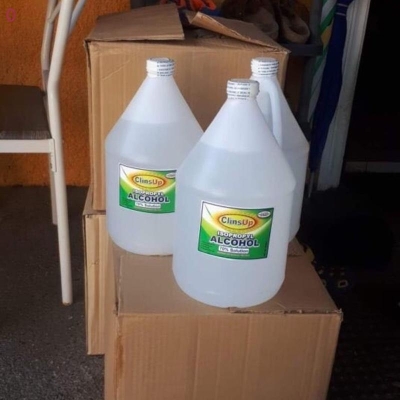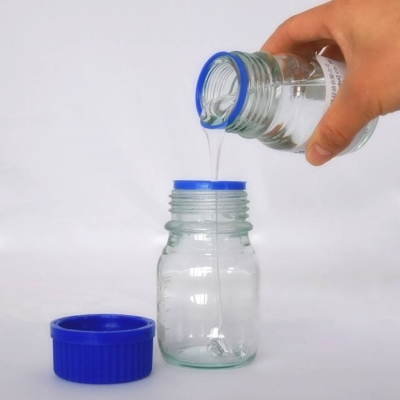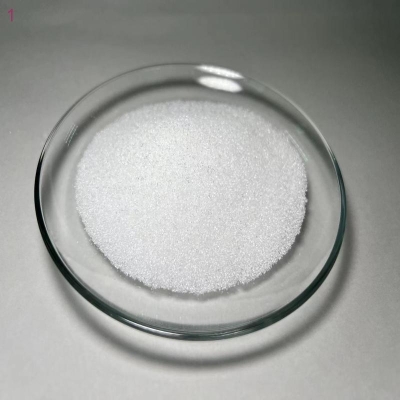-
Categories
-
Pharmaceutical Intermediates
-
Active Pharmaceutical Ingredients
-
Food Additives
- Industrial Coatings
- Agrochemicals
- Dyes and Pigments
- Surfactant
- Flavors and Fragrances
- Chemical Reagents
- Catalyst and Auxiliary
- Natural Products
- Inorganic Chemistry
-
Organic Chemistry
-
Biochemical Engineering
- Analytical Chemistry
-
Cosmetic Ingredient
- Water Treatment Chemical
-
Pharmaceutical Intermediates
Promotion
ECHEMI Mall
Wholesale
Weekly Price
Exhibition
News
-
Trade Service
【Hot attention from Chemical Machinery and Equipment Network ] Some time ago, the state* issued a notice clearly requesting that “from January 1, 2026, the production of mercury-containing thermometers and mercury-containing sphygmomanometers is prohibited.
” This notice caused heated discussions on the Internet.
As mercuryThe contents of the thermometer and the metal that is liquid at room temperature and pressure, mercury is a chemical substance that we are very familiar with.
But we know very little about the harm of mercury.
Hot attention of Chemical Machinery Equipment NetworkChemical machinery and equipmentthermometer” This notice caused heated discussions on the Internet.
As mercuryThe contents of the thermometer and the metal that is liquid at room temperature and pressure, mercury is a chemical substance that we are very familiar with.
But we know very little about the harm of mercury.
Mercury has strong biological toxicity.
Perhaps we have all been reminded that when the mercury thermometer at home is accidentally broken, it should be handled quickly.
Mercury is very volatile, so it is easy to cause mercury poisoning.
In fact, mercury poisoning caused by metallic mercury accounts for only a small part.
Mercury compounds, especially methylmercury, have repeatedly caused serious environmental hazards, such as the *Minamata disease in Japan.
Mercury and its compounds are not only highly biologically toxic, but can also be transmitted over long distances and accumulate in organisms.
It has become a priority pollutant controlled by countries all over the world.
Perhaps we have all been reminded that when the mercury thermometer at home is accidentally broken, it should be handled quickly.
Mercury is very volatile, so it is easy to cause mercury poisoning.
In fact, mercury poisoning caused by metallic mercury accounts for only a small part.
Mercury compounds, especially methylmercury, have repeatedly caused serious environmental hazards, such as the *Minamata disease in Japan.
Mercury and its compounds are not only highly biologically toxic, but can also be transmitted over long distances and accumulate in organisms.
It has become a priority pollutant controlled by countries all over the world.
Although countries have adopted a series of measures to manage mercury-containing wastes, the current mercury pollution situation is still severe, especially in the ocean.
The mercury that enters the ocean is usually converted into highly toxic methylmercury through biochemical effects, and then accumulates in organisms through food faces.
While harming marine life, it also has a huge negative impact on marine fisheries and humans.
There are currently more than 60,000 tons of anthropogenic mercury in the ocean.
In addition to the upper seawater, anthropogenic mercury will sink with the seawater and enter the deep seawater in the rapid formation area of deep water.
And an article published in Nature Communications recently stated that even if the Pacific Ocean is not in the deep water formation area, human-source mercury pollution has been found in the deep sea.
In the biological samples collected in the Mariana Trench, the research team found It has a mercury isotopic composition similar to that of the upper marine organisms.
The mercury that enters the ocean is usually converted into highly toxic methylmercury through biochemical effects, and then accumulates in organisms through food faces.
While harming marine life, it also has a huge negative impact on marine fisheries and humans.
There are currently more than 60,000 tons of anthropogenic mercury in the ocean.
In addition to the upper seawater, anthropogenic mercury will sink with the seawater and enter the deep seawater in the rapid formation area of deep water.
And an article published in Nature Communications recently stated that even if the Pacific Ocean is not in the deep water formation area, human-source mercury pollution has been found in the deep sea.
In the biological samples collected in the Mariana Trench, the research team found It has a mercury isotopic composition similar to that of the upper marine organisms.
Isotope analysis is an important way to trace the source of elements.
The source of mercury in the environment is complex.
In addition to human activities, natural activities such as volcanic eruptions and forest fires also produce mercury.
The isotope composition of mercury produced by different methods is also different.
By analyzing the isotope ratio of mercury in the organism, it can be judged whether the mercury enriched in the organisms in the depths of the Mariana Trench and the mercury in the organisms in the upper seawater are from the same source.
The research results show that the main source of methylmercury in trench organisms is the upper ocean, and the mercury may come from recent decades, so it is likely to come from human activities.
The transmission path may be small particles such as whale falls and dead seaweed particles, and the unique geological environment of the Mariana Trench will accelerate the transmission speed.
The source of mercury in the environment is complex.
In addition to human activities, natural activities such as volcanic eruptions and forest fires also produce mercury.
The isotope composition of mercury produced by different methods is also different.
By analyzing the isotope ratio of mercury in the organism, it can be judged whether the mercury enriched in the organisms in the depths of the Mariana Trench and the mercury in the organisms in the upper seawater are from the same source.
The research results show that the main source of methylmercury in trench organisms is the upper ocean, and the mercury may come from recent decades, so it is likely to come from human activities.
The transmission path may be small particles such as whale falls and dead seaweed particles, and the unique geological environment of the Mariana Trench will accelerate the transmission speed.
The researchers also said that the mercury enriched in the trench organisms can only be used as indirect evidence, and cannot directly prove the existence of anthropogenic mercury in the deep seawater of the Mariana Trench.
Isotope analysis mainly relies on mass spectrometry techniques, such as multi-receiving inductively coupled plasma mass spectrometry and stable isotope mass spectrometry.
The current isotope analysis technology cannot directly detect the extremely low mercury content in seawater.
Therefore, the study of man-made mercury pollution in the Mariana Trench still needs to wait for the further development of isotope detection technology.
This is also a problem faced by many cutting-edge research-the limitations of instruments have become the main factor restricting the progress of research.
This also means that once instrument technology advances, research will achieve a breakthrough.
Therefore, supporting the innovation and development of instruments is also promoting the progress of scientific research.
Isotope analysis mainly relies on mass spectrometry techniques, such as multi-receiving inductively coupled plasma mass spectrometry and stable isotope mass spectrometry.
The current isotope analysis technology cannot directly detect the extremely low mercury content in seawater.
Therefore, the study of man-made mercury pollution in the Mariana Trench still needs to wait for the further development of isotope detection technology.
This is also a problem faced by many cutting-edge research-the limitations of instruments have become the main factor restricting the progress of research.
This also means that once instrument technology advances, research will achieve a breakthrough.
Therefore, supporting the innovation and development of instruments is also promoting the progress of scientific research.
With the deepening of environmental research, the impact of human activities on the environment has been increasingly exposed.
Those inaccessible pure earths, such as Antarctica and deep in ocean trenches, have already found pollutants of man-made sources, in addition to mercury and microplastics.
It is still unclear what impact these pollution will have on the earth's ecology, and it is still necessary to continue to explore.
Those inaccessible pure earths, such as Antarctica and deep in ocean trenches, have already found pollutants of man-made sources, in addition to mercury and microplastics.
It is still unclear what impact these pollution will have on the earth's ecology, and it is still necessary to continue to explore.
Original title: The study of mercury pollution traces in the deep sea requires advances in detection technology







